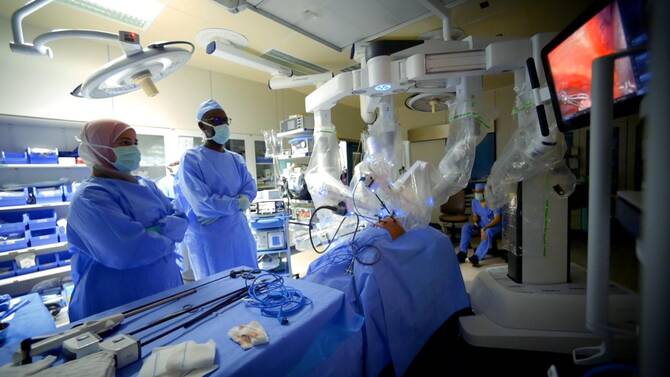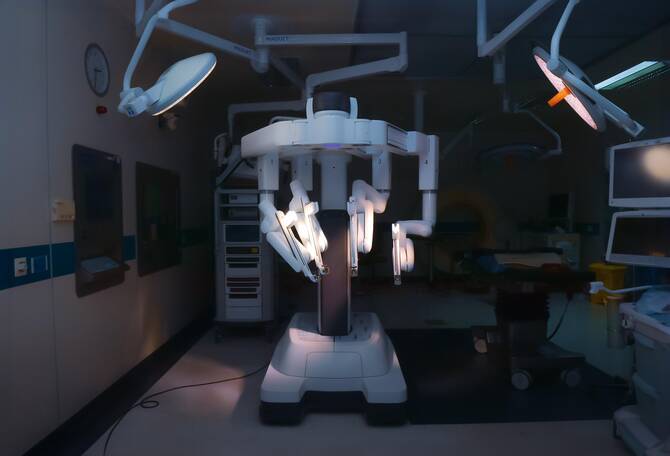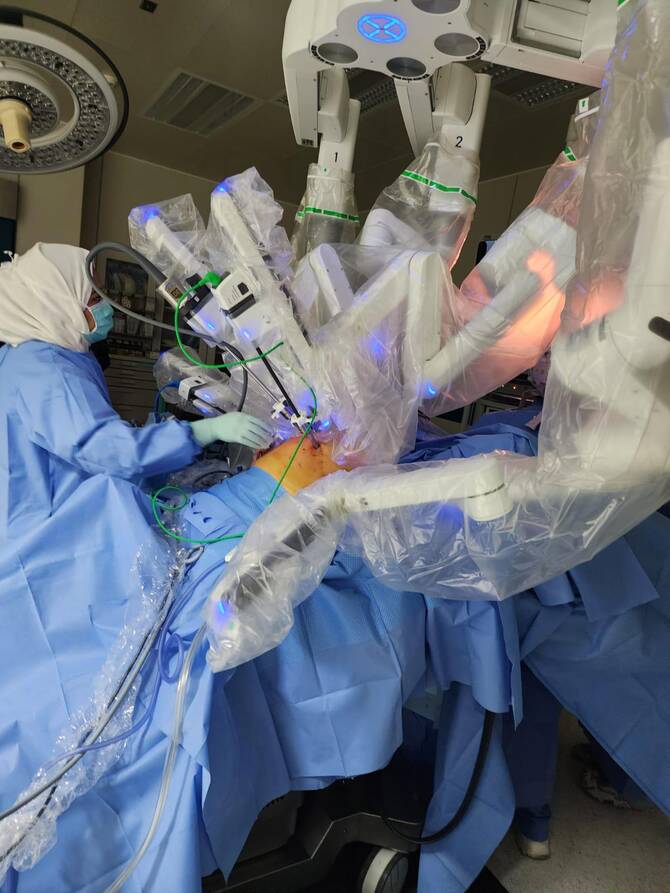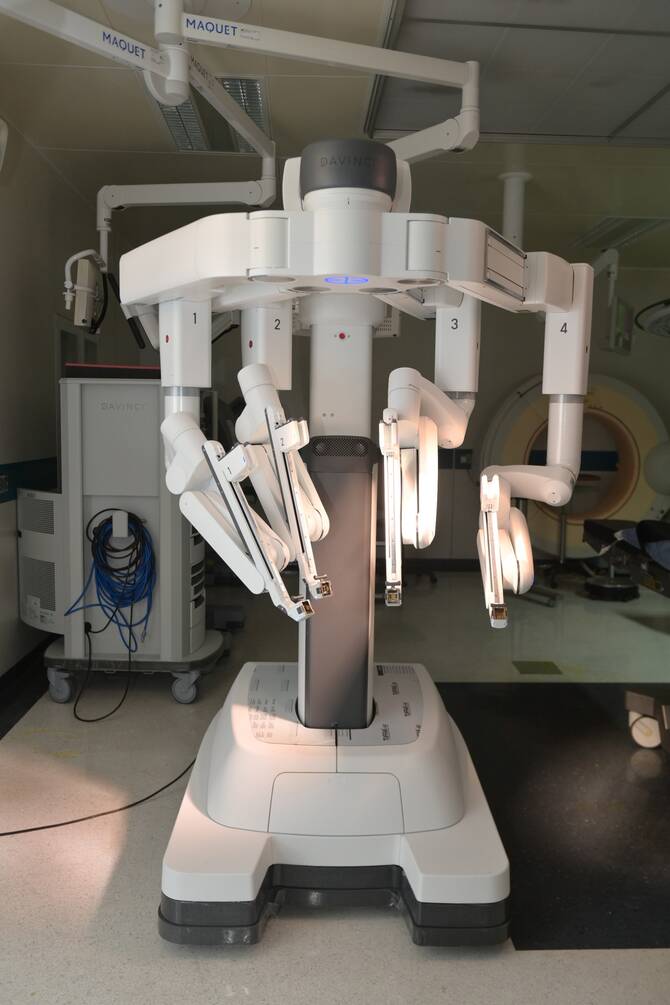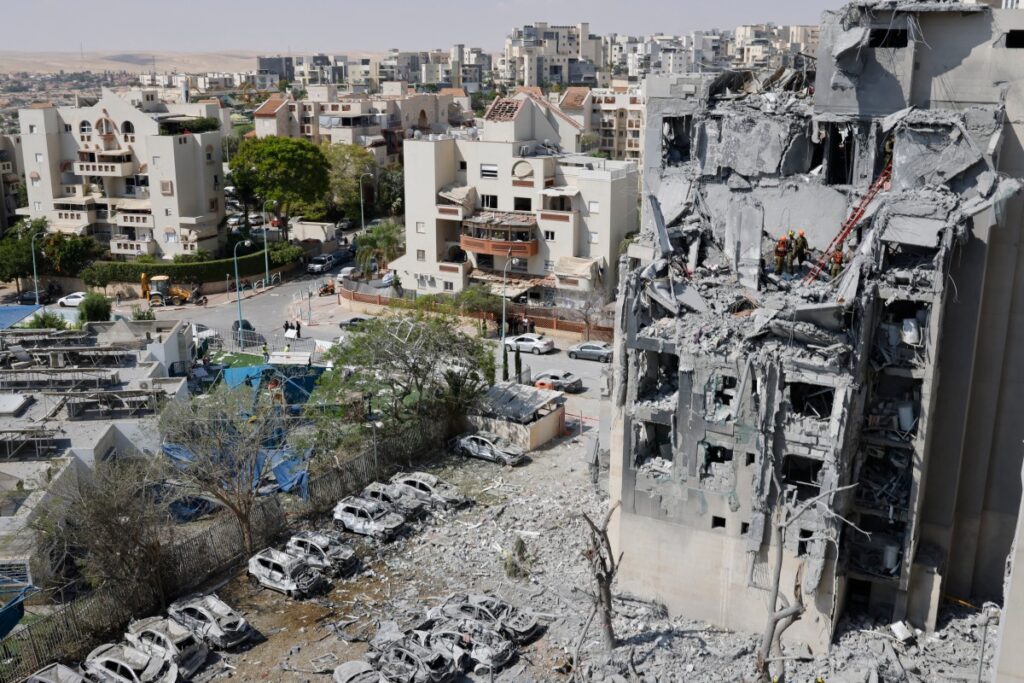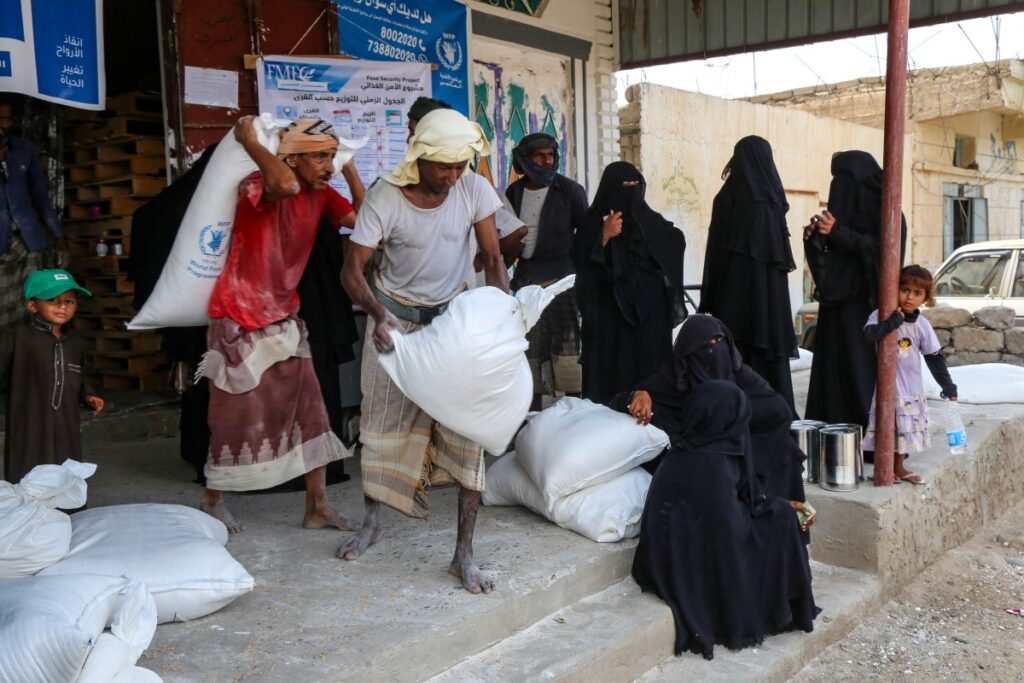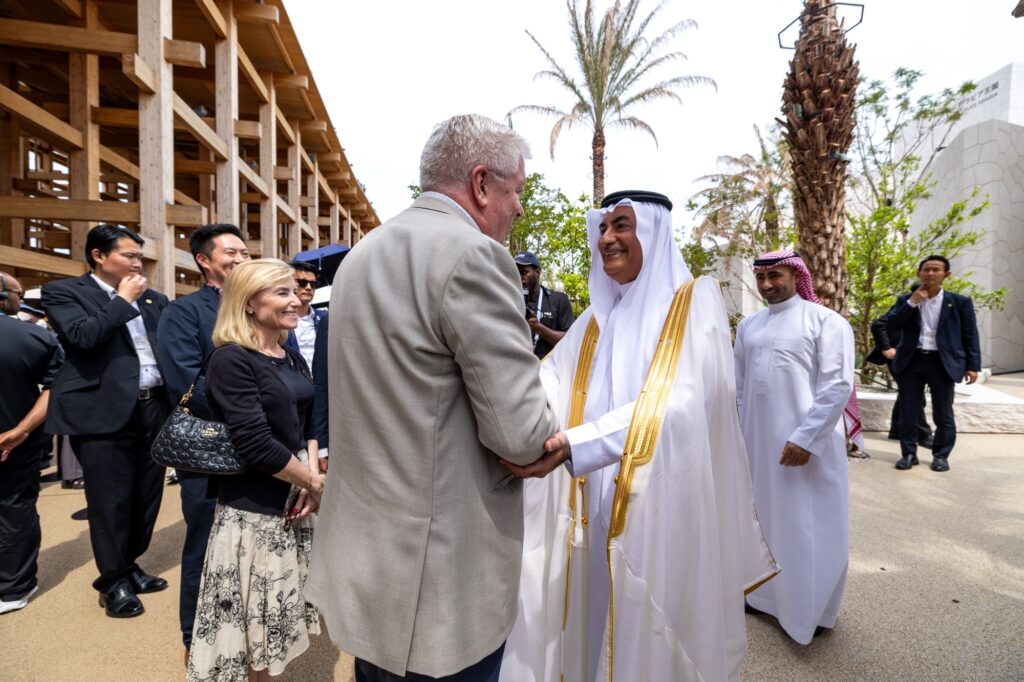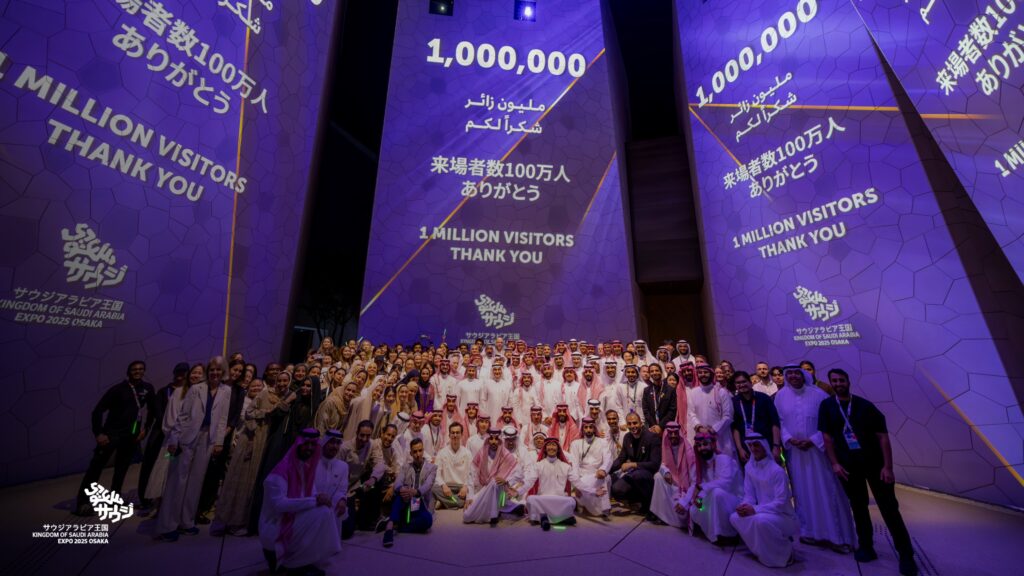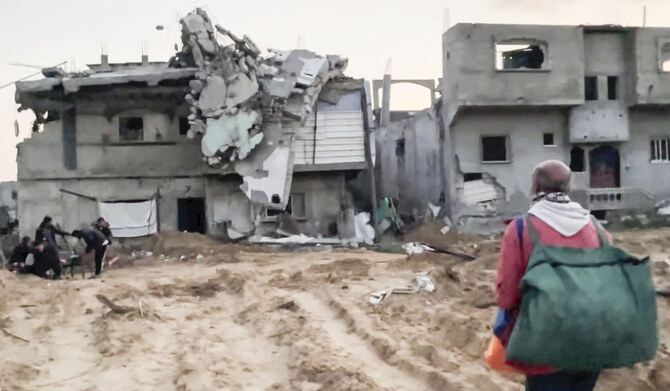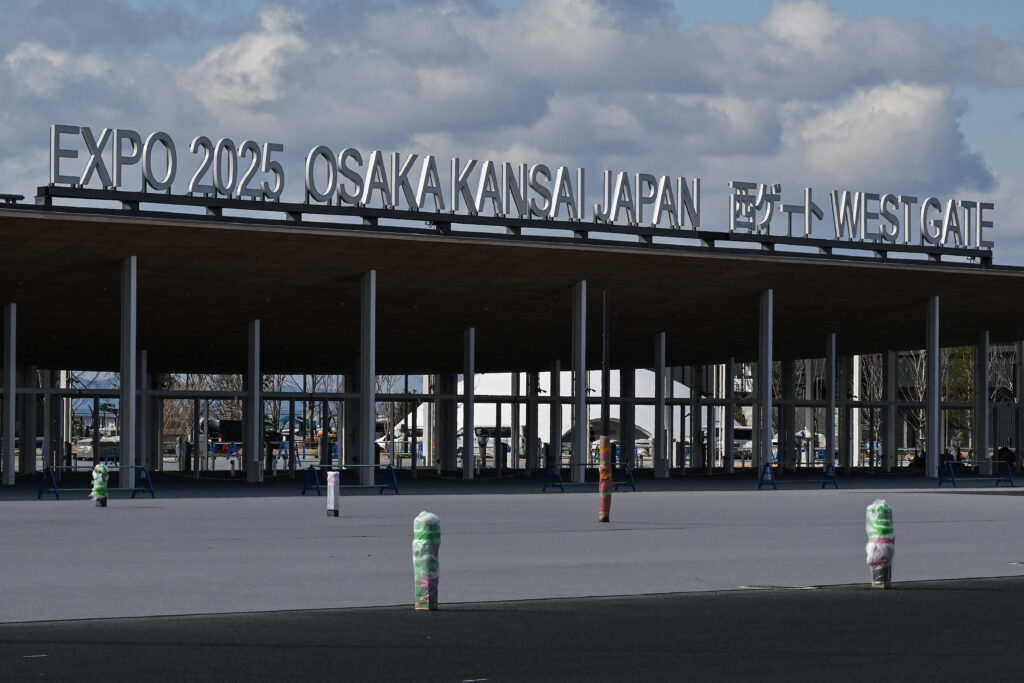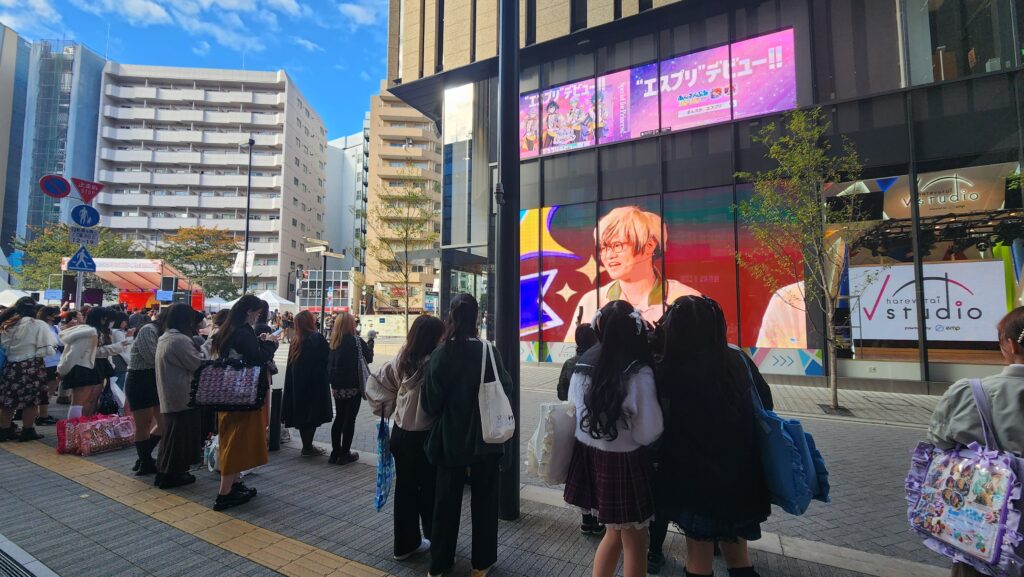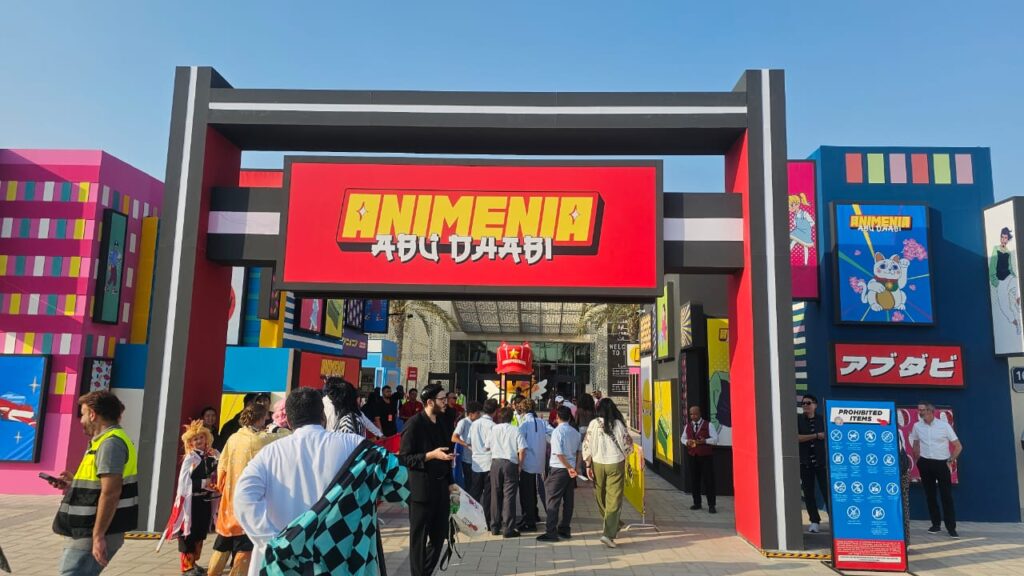MAKKAH: King Abdullah Medical City in Makkah has successfully performed the first precise robotic thoracic surgery using the Da Vinci Xi system.
Dr. Adel Tash, CEO of KAMC, told Arab News that the launch of the service is a significant medical milestone, further solidifying the city’s role as a leading reference center for advanced specialized healthcare, driven by the latest innovations in medical and surgical technology.
“The first case involved a patient in his thirties who suffered from recurrent air accumulations in his left chest cavity, causing persistent breathing difficulties. Tests revealed cysts in the upper and lower lobes of his left lung. These cysts were successfully removed, and the lung was attached to the chest wall using a surgical robot during a delicate operation that took an hour and a half,” Tash said.
The operation was performed under the leadership of Dr. Muteb Al-Zaidi, a consultant in thoracic, esophageal, and gastric surgery, using robotic and minimally invasive endoscopic techniques. He was assisted by Dr. Ayman Jaafar, assistant consultant in thoracic surgery, in collaboration with a specialized team from the anesthesia and nursing departments.
Tash said robotic surgery is characterized by the high precision provided by the 3D camera, and the ability to precisely access complex areas of the body with minimal intervention, which is reflected in reduced post-operative pain, accelerated recovery, and faster discharge of the patient from the hospital compared with traditional operations.
He said that traditional operations required surgical incisions that could be more than 10 centimeters whereas a single incision in robotic surgery does not exceed 1 cm, which reduces side effects and improves overall surgical outcomes.
Tash concluded by underscoring KAMC’s ongoing commitment to adopting the latest scientific technologies and providing advanced and safe healthcare services that contribute to improving patients’ quality of life and making the treatment experience a model to be emulated across the Kingdom and the region.
In this context, KAMC, a member of the Makkah Health Cluster, launched the Da Vinci surgical system, positioning itself among the first healthcare institutions in the Western Region to adopt this state-of-the-art technology for intricate and high-precision surgeries. This step is expected to enhance the quality of medical services and elevate the patient experience, aligning with the goals of the Kingdom’s Vision 2030.
The Da Vinci system is a robotic platform that allows surgeons to perform complex procedures with exceptional precision. Operated from a central console, the system translates the surgeon’s hand movements into highly refined, microscopic actions, enhanced by a high-definition, magnified 3D view of the surgical site. It comprises three key components: the surgeon console, where the surgeon directs the procedure via an advanced visual interface; the patient cart, which houses robotic arms equipped with surgical instruments and a high-resolution camera; and the vision cart, responsible for image transmission and visual processing. Crucially, the system is not autonomous. The entire operation is performed under the full control of a surgeon.
The system was first used at KAMC in a thoracic surgery, followed by a complex procedure for a patient with uterine cancer. The surgery was completed without complications, and the patient was discharged in less than 24 hours.
KAMC now plans to expand the system’s use to a wide range of specialties, including urology, gastrointestinal surgery, thoracic and cardiac procedures, bariatric surgery, and other advanced general surgeries.
The system offers a range of technical and medical advantages, including high-definition 3D visualization that allows surgeons to observe intricate anatomical details with exceptional clarity; ultra-precise instrument control that mimics the natural movement of the human hand with microscopic accuracy; and minimally invasive procedures through small incisions, which significantly reduce pain, blood loss, and the risk of infection.
Patients benefit from faster recovery times, shorter hospital stays, and improved surgical outcomes with lower complication rates compared with traditional surgery. Additionally, the system supports advanced surgical education and training through a safe, highly accurate simulation environment.
KAMC seeks to broaden the application of robotic surgery across additional subspecialties, advance physician training through immersive virtual reality simulations, and use smart analytics and artificial intelligence to elevate the precision, efficiency and overall quality of surgical outcomes.



